Precise, Controlled Wierdness at Ruby/Dakota
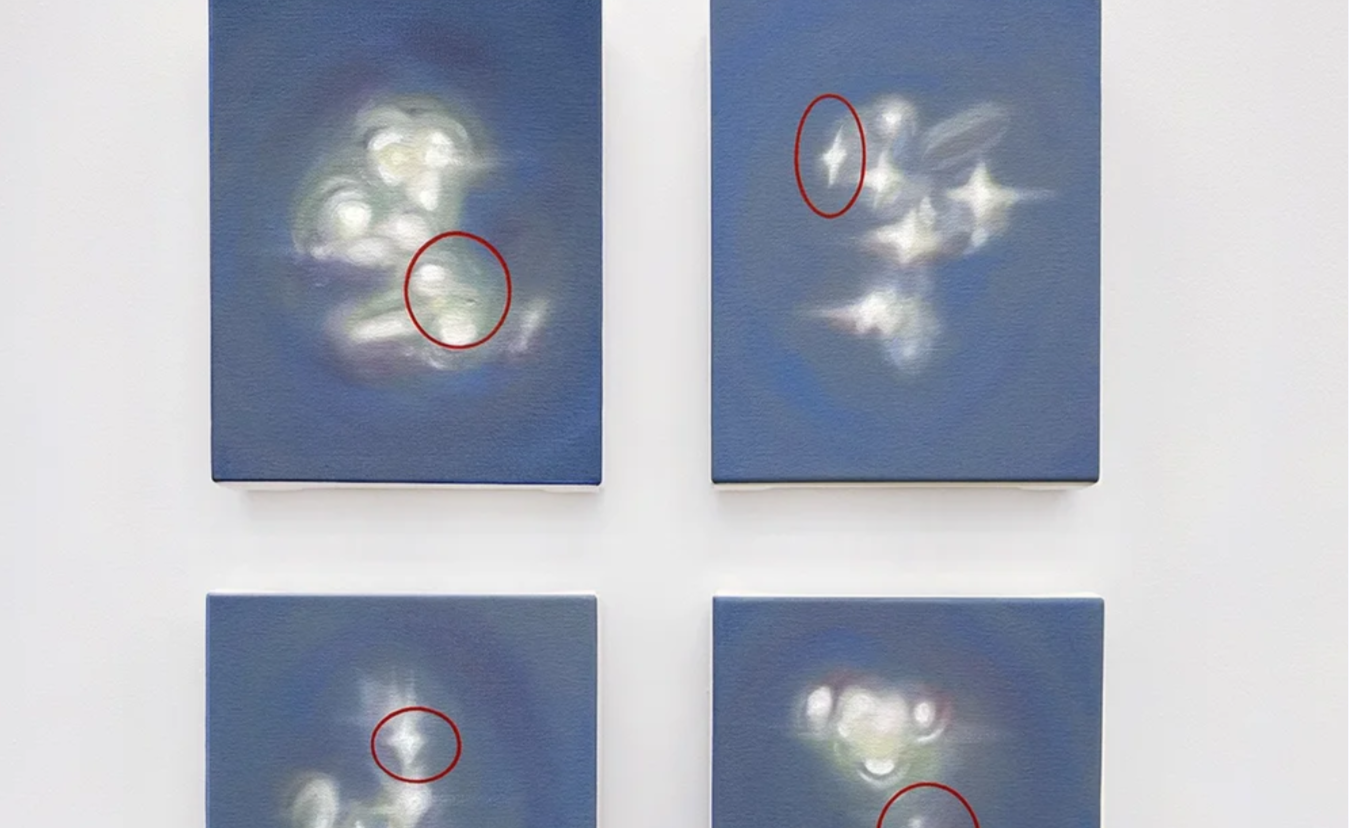
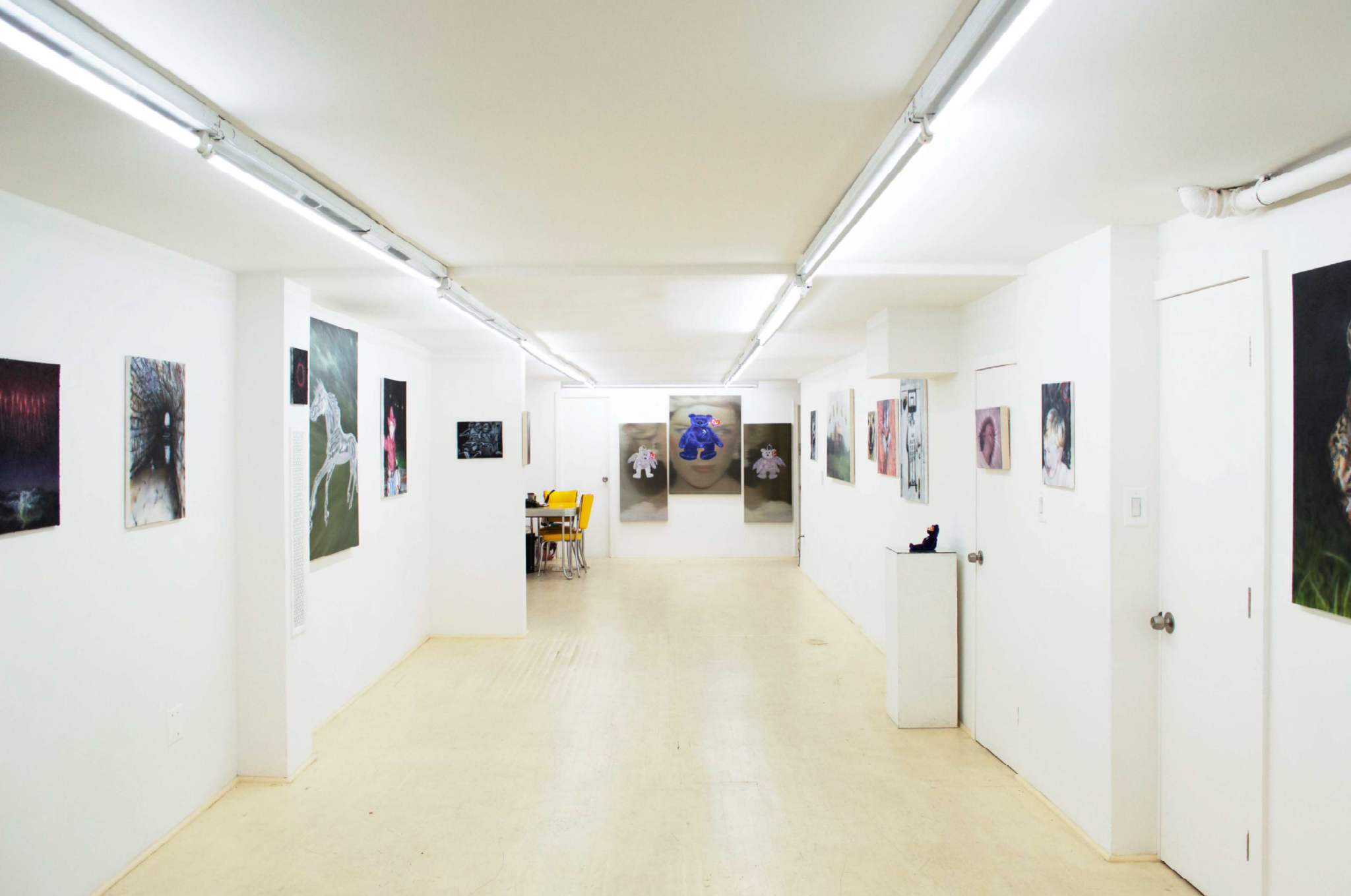
I almost tapped a painting, mistaking the red orb on its surface for a notification dot on my phone. That reflex says a lot about living in 2025. It also speaks to the sly power of Dark Spot with White Dots, a duo show by Nicolina Morra and Brock Saunders at Ruby/Dakota in New York. This exhibition operates in that generational twilight where the transcendent and the everyday blur—where a cosmic sign might read, at first, like just another ping on your screen. It’s internet-savvy and eerily elegant, setting a Tumblr-era mood of dark wonder without a hint of ironic distance.
The gallery’s press release declares, “We are not alone… the existence of the transcendent is Real.” Walk in, and you feel it. The room hums like a low-level paranormal event. According to the show’s lore, two uncanny phenomena have been “reported:” one in the deep green of the Virginia woods, the other in a Starbucks drive-thru in Tallahassee. It’s a cheeky setup, but it points to the artists’ real origins. Saunders, 29, hails from rural Virginia; Morra, 22, lives in Tallahassee, Florida. Each artist has channeled a piece of their world into a kind of secular vision. One reaches for the sublime in nature’s shadows, the other in pop culture’s glow. The result is a duet of the uncanny—otherworldly airbrush alongside glassy oil paint—that coalesces into an almost identical aesthetic: laborious, urgent, and completely glazed-over in mood.
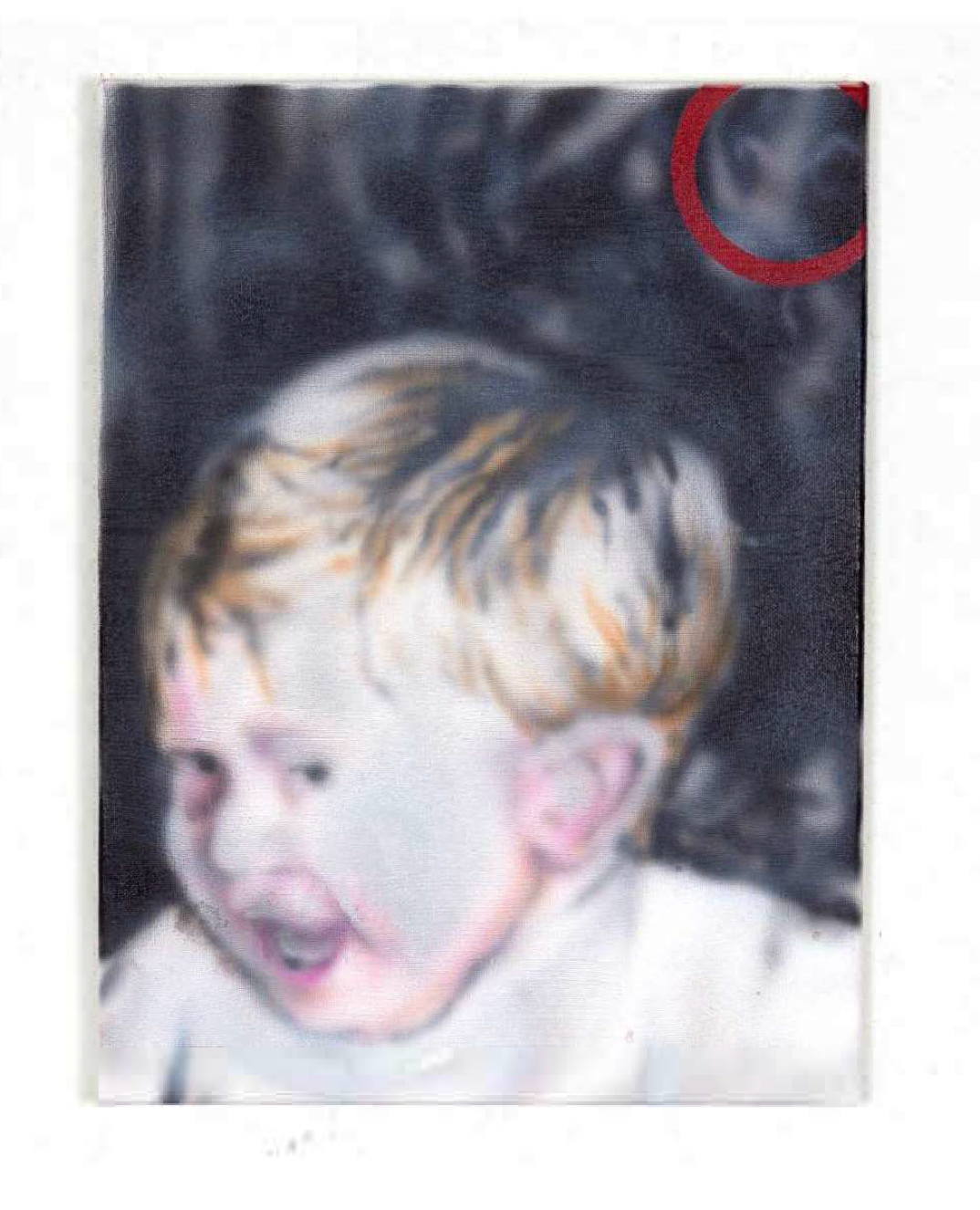
At a glance, you might not guess which works are Saunders’s and which are Morra’s. Both painters favor a high-fidelity, almost slick surface that feels like looking at a screen or a dream. Saunders works in meticulous airbrush: soft-edged gradients and photo-real precision that give his images a haunted stillness. Morra uses luscious oil on canvas, building up layers of blur and sharpened detail until her scenes emanate a backlit, “glowing monitor” quality. Stand in front of these paintings and you get that familiar/unfamiliar tingle—like you’ve seen this somewhere before, but maybe in a past life or a lost file. It’s unsettling in a way that attracts and repels at once. You keep looking not because the images are conventionally beautiful (they’re actually quite dark, literally and metaphorically), but because they project a precise, controlled weirdness. It’s like watching a ghost story play out through a glossy Instagram filter.
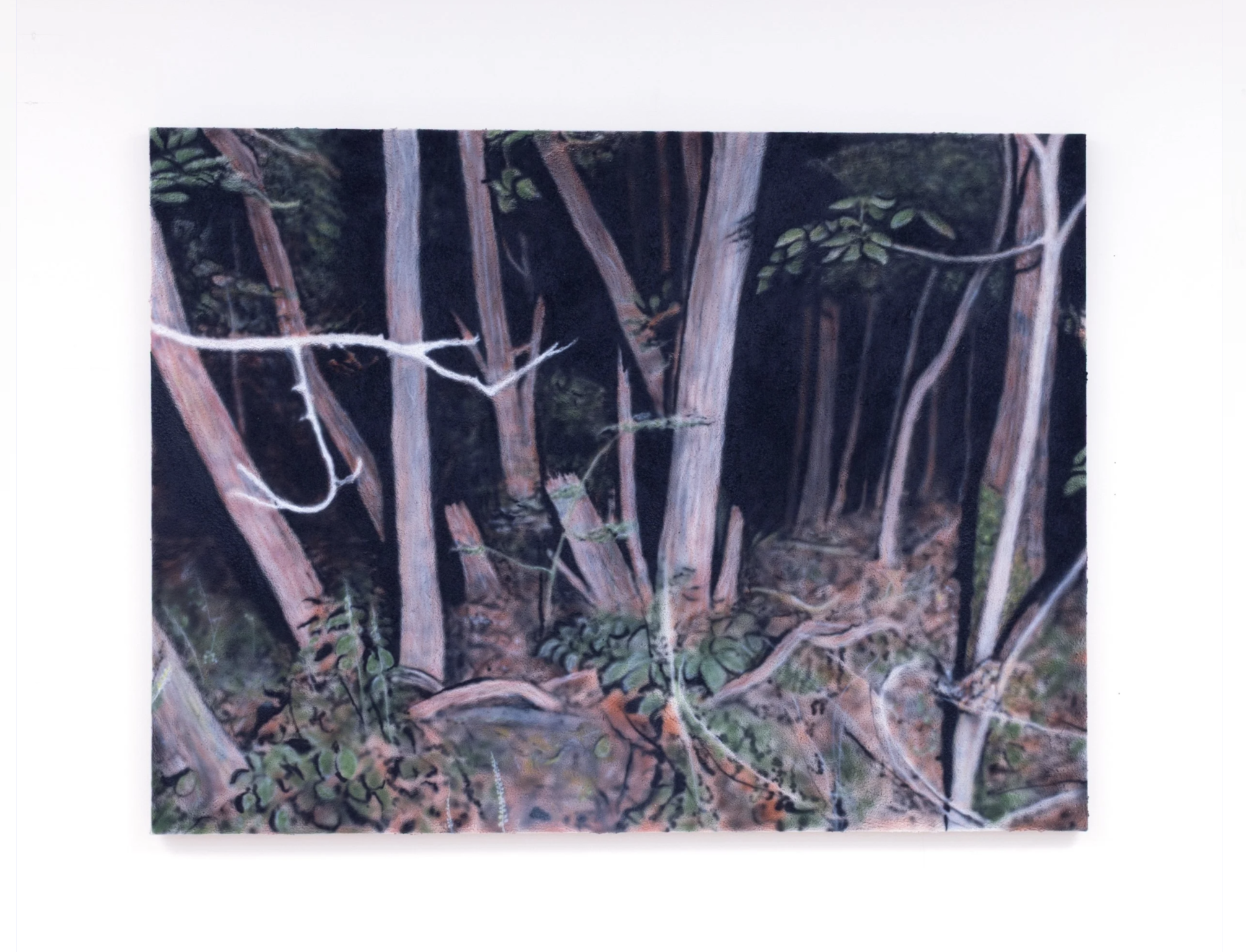
Saunders’ paintings could be stills from a videotape of a forest at night—the kind that makes you squint for a phantom. In one of his pieces, North Woods, a dense woodland scene is rendered in deep emerald-black, so shadowy your eyes take a moment to adjust. In Tunnel, a concrete underpass glows with eerie orange mist, light leaking into blackness; it feels like a screenshot from a found-footage horror clip. Abductee Sketch introduces a spectral face—pale, featureless, ambiguously human. The softness of the airbrush turns cliché into apparition. And in Cowboys and Aliens, an oddly young boy evokes American folklore’s collision of frontier myth and lizard-man theory, where belief and spectacle meet. All of Saunders’ works belong to a lineage of cinematic mystics—from Ruscha’s desert horizons to early CGI surrealism—but translated into Gen-Z’s language of viral mythology and no cturnal anxiety. Only one work doesn’t belong to this category: Red Circle 1 and 2 are special cases, the painter weirdly returning to Suprematism to distill all that narrative into a single sign.
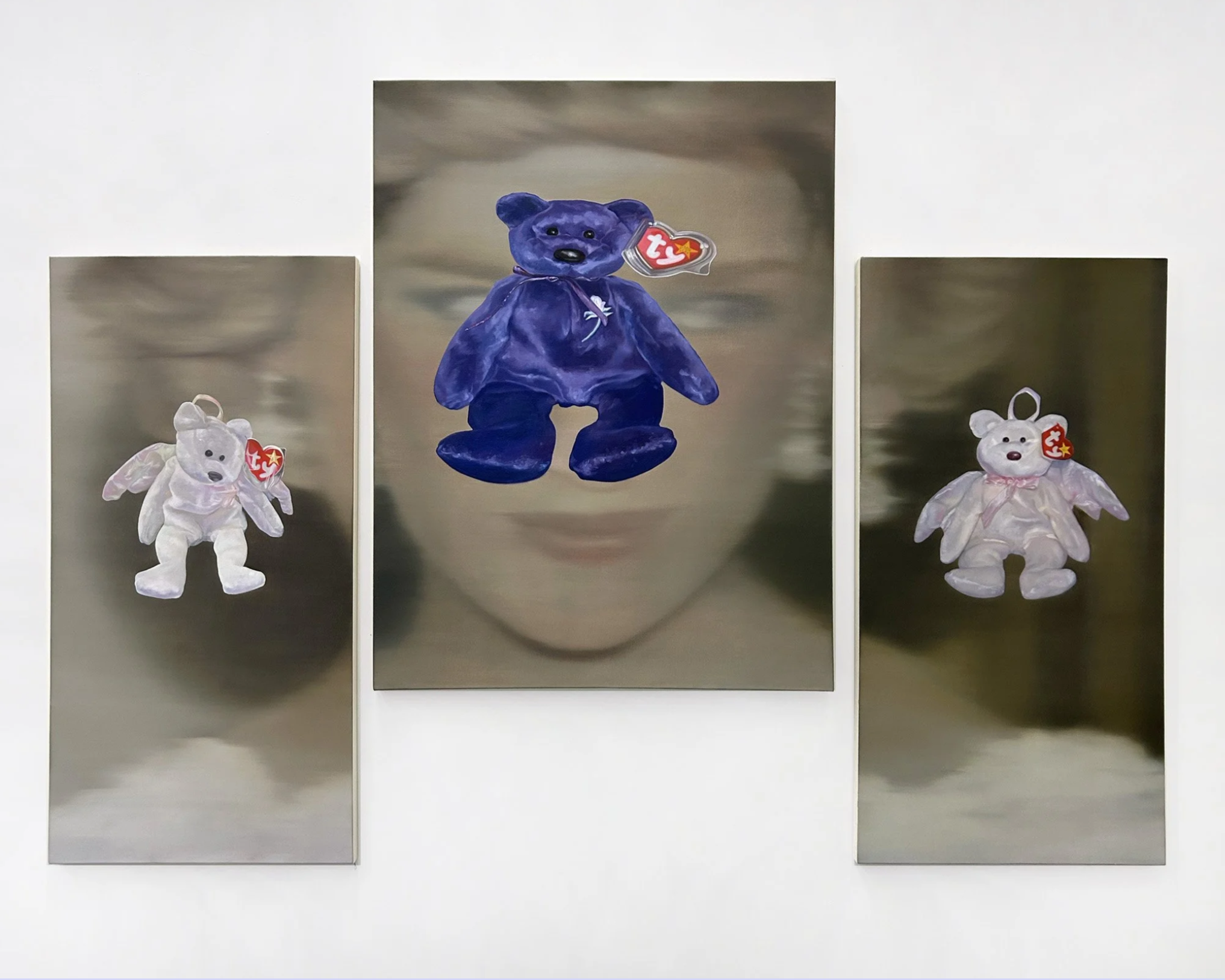
On the opposite wall, Morra’s paintings meet Saunders’s uncanny vibe but with a devotional twist. If he’s conjuring monsters in the woods, she’s summoning saints from the detritus of pop culture. Her centerpiece is a triptych titled Altar (The People’s Princess) (2025), and it’s exactly as it sounds: an altar-piece dedicated to Princess Diana. The composition spans three tall panels like a medieval church triptych. In the middle, a soft-focus Diana gazes upward, her face partly obscured by something bizarre and poignant – the Princess Diana Beanie Baby. Yes, the one Ty released in 1997 in her memory. Morra painted the toy bear large in the foreground, its polyester fur and white rose emblem rendered with jewel-like clarity, half-covering Diana’s visage as if to protect or perhaps commodify it. The side panels of the altar glisten with further symbolic clutter: I caught hints of candles and maybe paparazzi camera flashes turned into abstract white highlights.
You can almost hear the hum of an old cathode-ray TV somewhere, airing a royal wedding rerun to an empty room. Morra’s brilliance is one of secular worship: she takes icons of our collective memory – a princess, a piece of merch, maybe a cult film still here or a viral photo there – and combines them to objects of yearning. Her brushwork oscillates between lush realism (the glassy shine on the Beanie Babies) and dreamy blur (Diana’s features dissolve like a memory fading). This push-pull between clarity and obscurity creates tension; it’s like she’s painting from a place between memory and hallucination, trying to grasp something just out of reach.
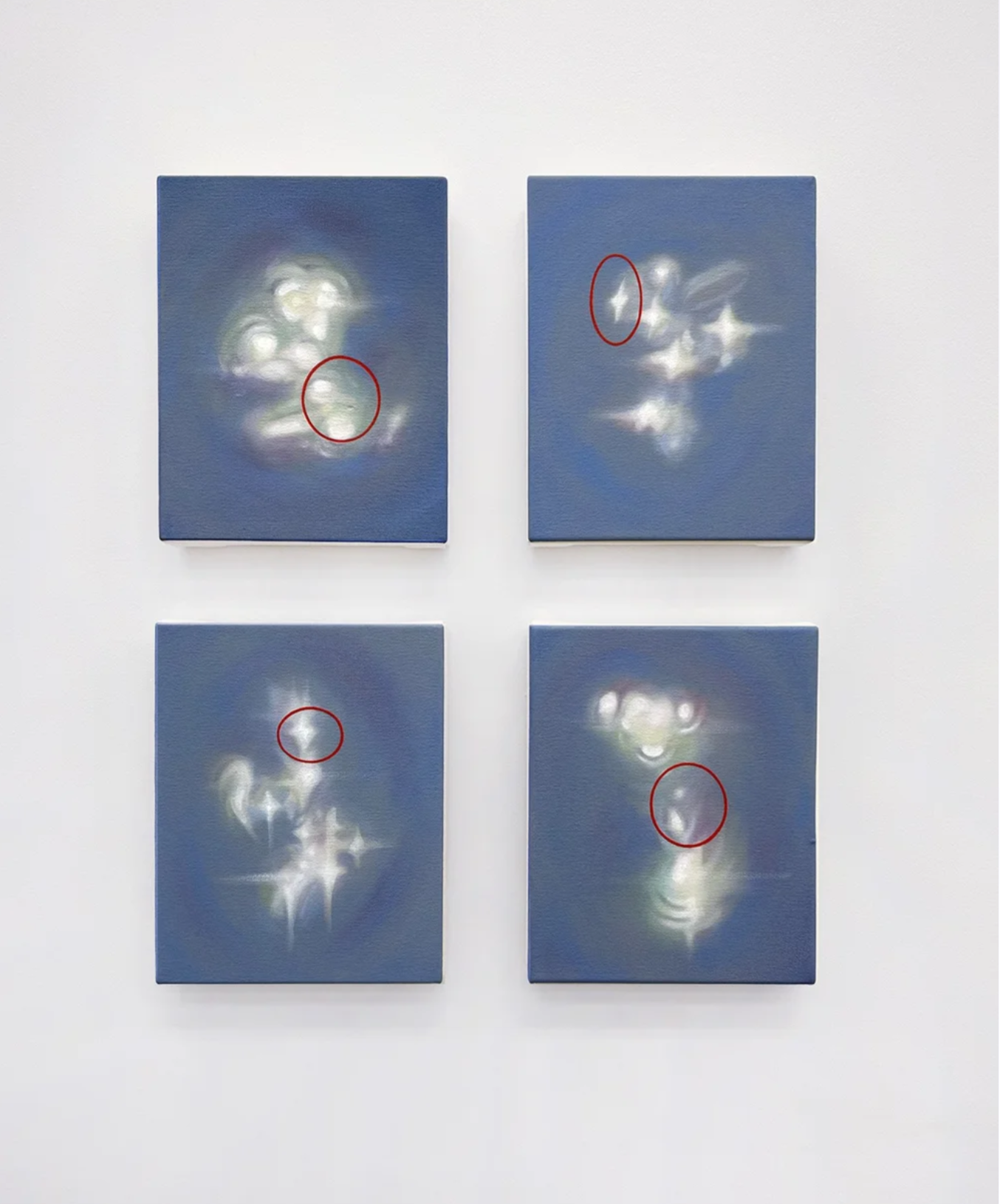
Despite their different subjects, Morra and Saunders strike an uncanny harmony. Both favor a palette of deep nocturnal greens, somber blues, blood reds. Both are fluent in the aesthetics of nostalgia and eeriness – think late-90s VHS tape vibes, early-2010s Tumblr goth, the kind of images you’d find on a message board for unexplained mysteries or in a teen’s folder of “inspo” pics that feel important for some reason. Not to mention the show’s title, Dark Spot with White Dots, perfectly captures that lore: darkness studded with attention, the night sky or the phone screen, depending on your distance.
By the time I left Ruby/Dakota, I felt as if I’d wandered through a very peculiar field report on my own culture’s subconscious. I thought of Gerhard Richter, who once painted random news photographs to blur the boundary of so-called truth. But in Morra and Saunders’s case, that uncertainty has only deepened: the crisis of seeing has become the air we breathe. In 2025, the question isn’t whether an image lies, but whether memory itself can still be trusted. Morra and Saunders tap into this concept, framing it as “childhood memory.” But look closely—there’s an alien (the outer-space kind) lurking within. Before the age of sixteen, Gen Z had already seen everything—every conspiracy, every icon flattened into content—and it is true that we are contaminated. But we have to accept this contamination as the baseline so that art still has a chance to reflect a world already drowning in its own reflections.
Dark Spot with White Dots on view through October 20, 2025 at RUBY/DAKOTA, 155 E 2nd Street, NYC. Event on October 9, 6-8PM.
You Might Also Like
What's Your Reaction?
Serena Hanzhi Wang is a writer, artist, and early-career curator based in New York City. Her practice is informed by her studies in philosophy and art history under the Visual & Critical Studies major.

